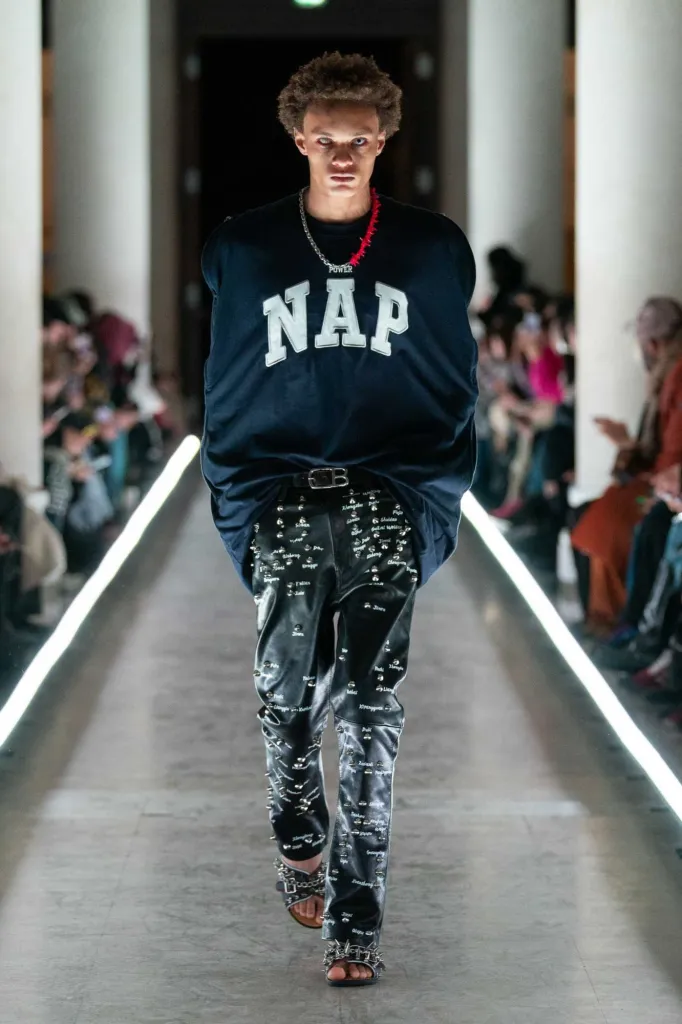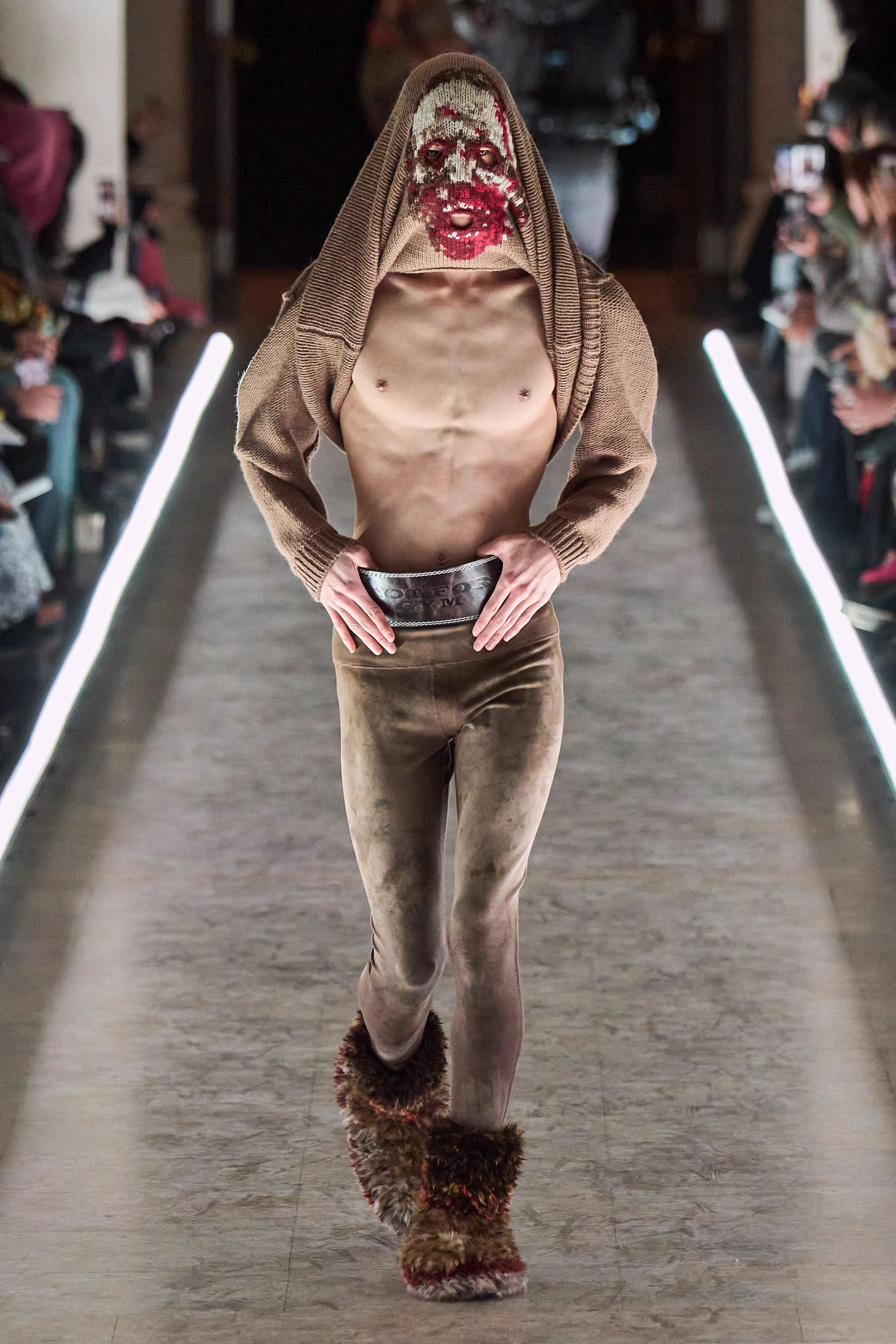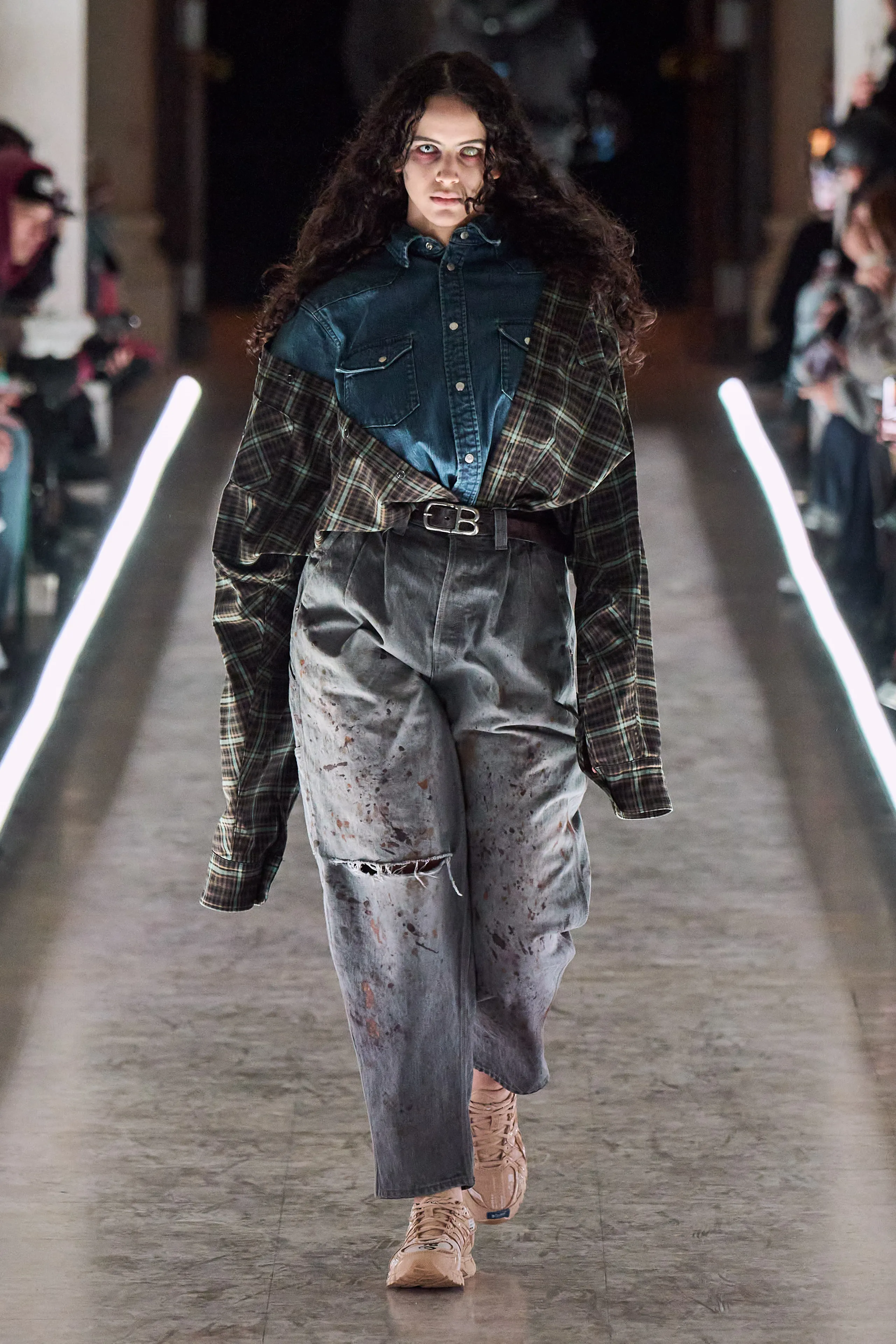Fashion Zombies: Have Luxury Brands Lost Their Soul?
- Melissa Lupo

- Oct 16, 2024
- 6 min read
Updated: Oct 23, 2024
Are luxury brands turning into fashion zombies? The chatter and whispers around the Fashion Weeks lately have been giving the same general energy: something seems off.

The feeling is so palpable that some brands like Doublet for example, dressed models as actual zombies creeping down the runway for their Fall 2024 show, complete with Michael Jackson’s “Thriller” playing in the background.
Many luxury brands seem to be skeletons of what they once were, lifeless and aimless, clinging on to the grandeur of a name who's relevance has faded with time. Many factors are at play that have lead to the overall “brand fatigue” that appears to be plaguing the industry and creating fashion zombies. Trends, over-consumption, and what seems like a constant state of changing Creative Directors, have degraded consumers confidence and created a cloud of confusion.
DOUBLET RTW FALL 2024
Inspiration is getting lost in the mix, along with a general lack of practical innovation that has descended into novelty. Nobody minds a bit of kitsch and role-play but it seems like many brands will do anything to gain media attention, putting the sartorial talent that defines their craft on the back burner.
Fashion Zombie Jeremy Hutchison seen around fashion weeks for his project titled "Dead White Man", for the British Textile Biennale.

When a Creative Director leaves a luxury brand nowadays it seems like the brand’s identity leaves with them. In the past, Maisons were launching pads and places of respite for Creative Directors with a strong vision. They invested in and chose figures who were creative in finding ways to interpret the brand’s DNA, able to masterfully weave their own experience into the design.
Rushing Creative Directors to communicate their aesthetic brings flashy but short-term results.
At some point along the way the dynamic began to change as Creative Directors were being placed as mastheads of an aesthetic and rushed to communicate their vision under a brand’s name. Once aware of the media attention this brought, there was a shift in focus from interpreting a brand’s DNA to reconstructing it. The increased engagement from moving Creative Directors in and out, feeds into a cycle of dependency on a "quick hits", which encourages theatrics and exaggerated emotional displays, rather than fostering a steady, long-term relationship with one Creative Director over time.
When Creative Directors are frequently moved in and out, it creates short term results which might be impressive, but that are actually hollowing out the brand. The reality is that the “not-so-cheap” tricks, smoke, and mirrors are doing nothing to cultivate a relationship with consumers for the long term. In this context, Creative Directors are transformed into mascots who compete for the crowd's attention, and brands become zombies merely hosting the creative ideas of an artist, only to then appear soulless and vacant when the Creative Director du jour leaves.
Allowing Creative Directors ample time to experience the brand allows the opportunity for more authentic co-creation.
Spectators are getting caught in an experience that feels like an eggplant measuring contest and it’s costing brands more than just the price of an Olympic synchronized swimming team. The lack of long-term commitment and appropriate research in choosing a Creative Director dilutes the brand’s DNA and causes newer generations to lose sight of the reason everyone cared about them in the first place.
The lack of long-term commitment and appropriate research in choosing a Creative Director dilutes the brand’s DNA and causes newer generations to lose sight of the reason everyone cared about them in the first place.
On the other hand, when a brand cultivates a relationship with a Creative Director, allowing time for exploration, the results leave a lasting impact. A great example of a copacetic relationship between a brand and Creative Director is PierPaolo Piccoli’s tenure at Valentino and Dior. In this scenario the Creative Director was given space and time to digest the brand’s history which provided the opportunity for organic co-creation based on PPP’s authentic experience with the Maison and ample time to connect properly with the teams who’ve been designing for the brand, often for long periods of time.

How to preserve brand DNA and still evolve: more than one history to tell.
The term “DNA” is one we often use interchangeably with “brand history”, but the million dollar question is, what exactly is brand DNA composed of, and from what era?
To really understand a brand’s historical significance it’s essential to consider that evolution is inevitable and by now, plenty of legacy fashion houses have more than one history to tell. A brand is expected to reflect current cultural conversations happening in the world, but through the years opinions may change, and so do the people the brand is dressing. Trying to continue the same conversation throughout generations is a bit like trying to pin down a moving target. When a new Creative Director is appointed, the expectation is that the conversation will have evolved, but not change completely, and the brand’s DNA would be a tapestry of past conversations and values.
It used to be easier to fit a customer into a particular archetype and for the Designer to connect clearly through shared values and aesthetics. When the designer themselves moves on in one way or another, the new Creative Director is meant to move the conversation forward within the same context. However, the evolution of these conversations have ushered in a new type of customer that is multifaceted - one that represents more than just one archetype and who may be a part of various conversations.
Capturing a cultural zeitgeist to avoid the “Brand Zombie” effect.
To avoid the Zombie effect in which a brand seems empty and aimless once a Creative Director leaves, it’s important to retain a thread from the past to weave a tapestry of the times that honors the brand and doesn’t exploit its name. Brand values are often aligned with a particular customer archetype based on shared motivations. Understanding archetypes from a storytelling perspective gives insight into a character’s motivation so looking at customer’s relationship to the brand through the lens of an archetype reveals the motivation for their loyalty. If a brand abandons all traces of the original archetype instead of adding to it, they take away also the original motivation for which customers aligned with the brand in the first place.
Recently, Oliver Rousteing of Balmain stated that for the upcoming collections he went back to his roots from when he started at the brand. Before being too quick to count this as lazy or self-centered, a closer look at his tenure reveals that this is a very informed and absolutely valid perspective. Rousteing’s residency as Creative Director of the brand has now spanned over a decade which is certainly long enough to live through and then reflect on an era. Looking back, his placement as Creative Director for Balmain in 2011 was a studied choice. The intention was to breathe new life into the somewhat stagnant brand and it was successful. He was a young Creative Director with a strong vision. The brand captured a cultural zeitgeist with Rousteing and his experience at the brand from such a young age. Then, by continuing to invest in and grow with Rousteing, they were able to capitalize on their investment having nurtured a relationship which now gives the Creative Director a unique and personal perspective. With his own personal style intermixed with the brands, both Oliver Rousteing and Balmain evolved in harmony. As a result, the Creative Director has gained a seasoned command over a period in the brand’s history, and created a thread for a future Creative Director to work from.
Without a soul, what’s the goal?
Completely discarding the previous history from a brand, a move we’ve seen in literal form when a brand wipes out their Instagram, is equivalent to “throwing the baby out with the bathwater” an expression that serves as a warning to be careful not to throw out something valuable by mistake from laziness or oversight. A brand that tries to cover up or completely replace their original customer archetype instead of evolve with them is ignoring their original perceived value and the motivation the customer has to buy. Assuming that people will simply follow a name into eternity even when the value behind the name has been hollowed out is shortsighted and unsustainable.
YSL, Balenciaga, and Versace are examples of heritage brands that have deleted their social accounts or content to represent a new era of the brand.
Leaving ample reference for the next generation of fashion gives them something to expand upon, and evolve according to their reality.
Drawing on a brand’s history in general may seem boring, irrelevant, or even impossible to some, but newer generations are looking for transparency about the past to understand where they fit into in the present. The more reference the next generation has of a brand, the more likely they’ll be to have something of substance to say about it, especially when they’re given the time and space to do so.
Without a soul, what’s the goal? Completely changing archetypes or losing sight of purpose is a sign that a brand will soon be among the walking dead. They are but a capsule of what remained, wandering aimlessly toward anything that looks like meat or fodder.
Brands that change archetypes according to the Creative Director, even when they say they aren’t, are attempting to be meaningful to all and thus, will be pleasing to none, becoming synonymous with any object that’s meant for everyone and no one.

















Kommentare